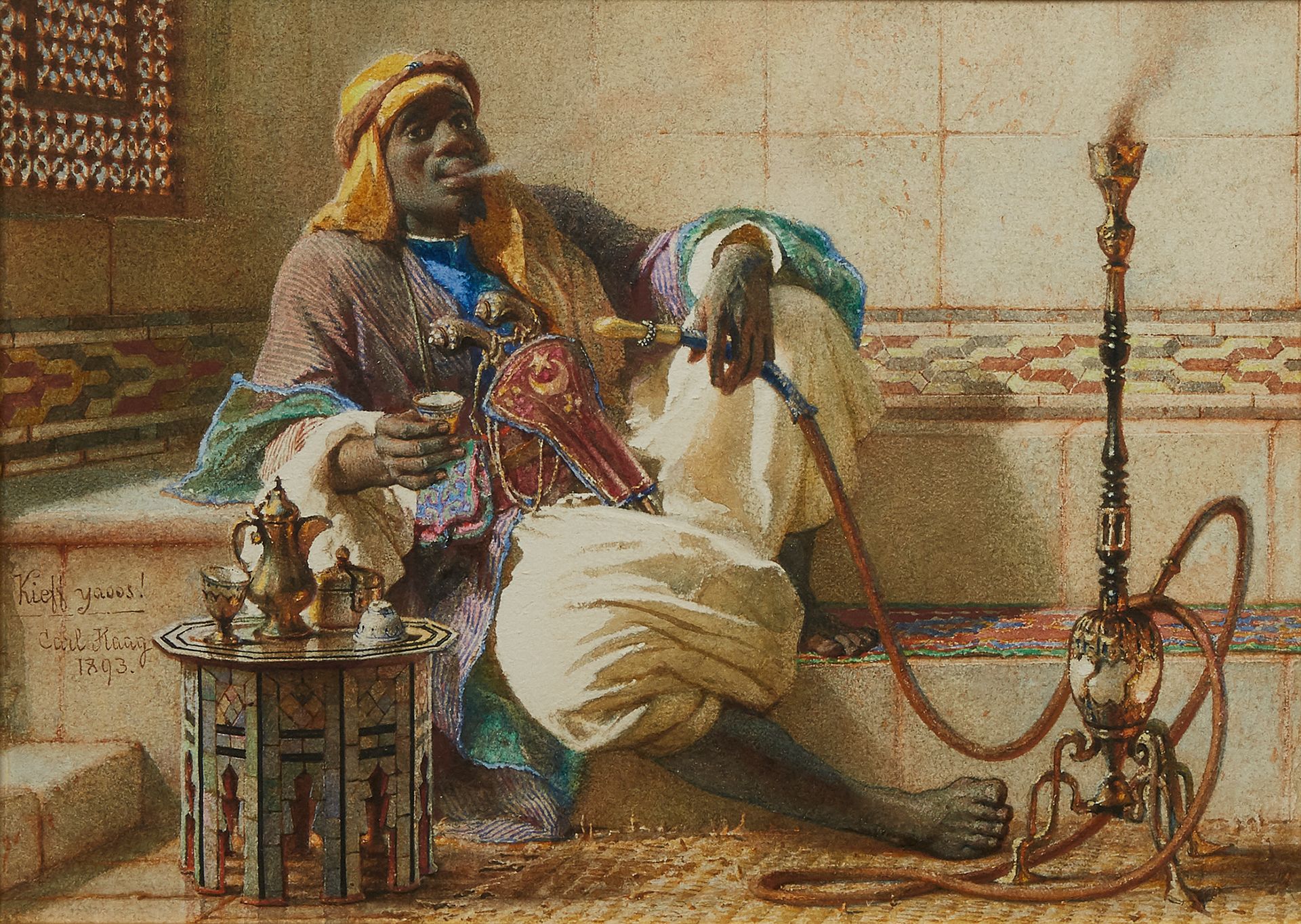Description
f- CARL HAAG (1820-1915) THE HAPPY SMOKER "KIEFF YAOUS! (REST IS SWEET)" Watercolor on paper, signed, titled "Kieff yaoos" and dated "1893" near middle left. Has an old handwritten label on the back signed, dated and inscribed "Kieff Yaous! (Rest is sweet!) by Carl Haag, R.W.S. Hofmaler to H.R.H. the reigning Duke of Saxony Coburg-Gotha, Ida Villa, 7 Lyndhurst Rd. Hampstead, London N.W., 1893". VIEW: 24.5 X 35 CM (9 5/8 X 13 3/4 IN.) PROVENANCE Christie's New York, October 22, 2008, lot 24.
35
f- CARL HAAG (1820-1915) THE HAPPY SMOKER "KIEFF YAOUS! (REST IS SWEET)" Watercolor on paper, signed, titled "Kieff yaoos" and dated "1893" near middle left. Has an old handwritten label on the back signed, dated and inscribed "Kieff Yaous! (Rest is sweet!) by Carl Haag, R.W.S. Hofmaler to H.R.H. the reigning Duke of Saxony Coburg-Gotha, Ida Villa, 7 Lyndhurst Rd. Hampstead, London N.W., 1893". VIEW: 24.5 X 35 CM (9 5/8 X 13 3/4 IN.) PROVENANCE Christie's New York, October 22, 2008, lot 24.
You may also like
